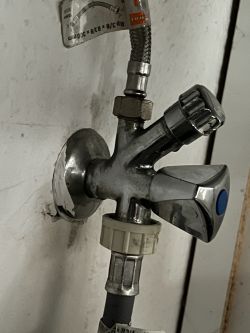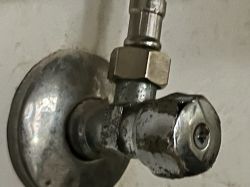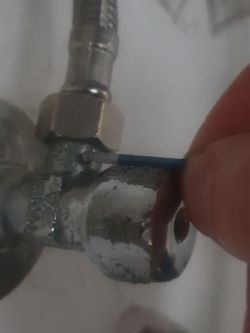Hello, how to turn off the valve that shuts off the water to the house? I mean which way. Does it matter, because I tried but it doesn`t want to move in any direction.

Czy wolisz polską wersję strony elektroda?
Nie, dziękuję Przekieruj mnie tamemilpawlicki wrote:Is it the one in the street? Call the waterworks. In my case it was double and when they tampered with the meter, they locked up my neighbor first instead of me. 10 years ago they renovated the connections and water supply in the street and now everyone has their own gate valve in the street (in the sidewalk rather than in the road).Hello, how to turn off the valve that shuts off the water to the house?


ta_tar wrote:Yes, you can remove the blue plastic and there may be a screw/nut there. This needs to be unscrewed and the knob removed. Then you check whether your knob is functional (if there are any teeth) and if something happens, buy a new knob and that's it. The same is true for warm water.
palmus wrote:These valves, if they cannot be moved,

 etc. and howl or is there a more gentle way?
etc. and howl or is there a more gentle way?pawtys wrote:I managed to unscrew the knob without any cuts
I used WD 40 lightly and turned the knob normally
For now, you can turn this valve by holding it with your fingers. Do you think I can turn it clockwise little by little until it closes? Have I opened it so much that I have to turn it from 10-15 full turns to close?
emarcus wrote:rotate its spindle as many full revolutions as you want
pawtys wrote:We don`t know if he`ll do it with a smile, but it`s the best idea. Let him replace both valves immediately with something newer, it will (hopefully) last for years.so maybe it`s better to hire a plumber who will come (if he comes) and he will do it with a smile on his face.
pawtys wrote:
It`s a good thing, I`m glad there will be another one installation flushing in my entire apartment
pawtys wrote:literally with a smile, seriously)
And it will come again because the valve he installed (a new one) does not close completely
I went further... I will replace all the older types in my house with new ones and/or those that do not function 100% with new ones
pawtys wrote:emarcus wrote:Rinsing
As a rule, when you open a closed installation, it will throw out scale and other things
Well, is it true or not?
Michelson wrote:Two smiling plumbers from the municipal company once came to me to replace a water meter.
When they saw the old NIBCO, one of them started sweating 😀.
